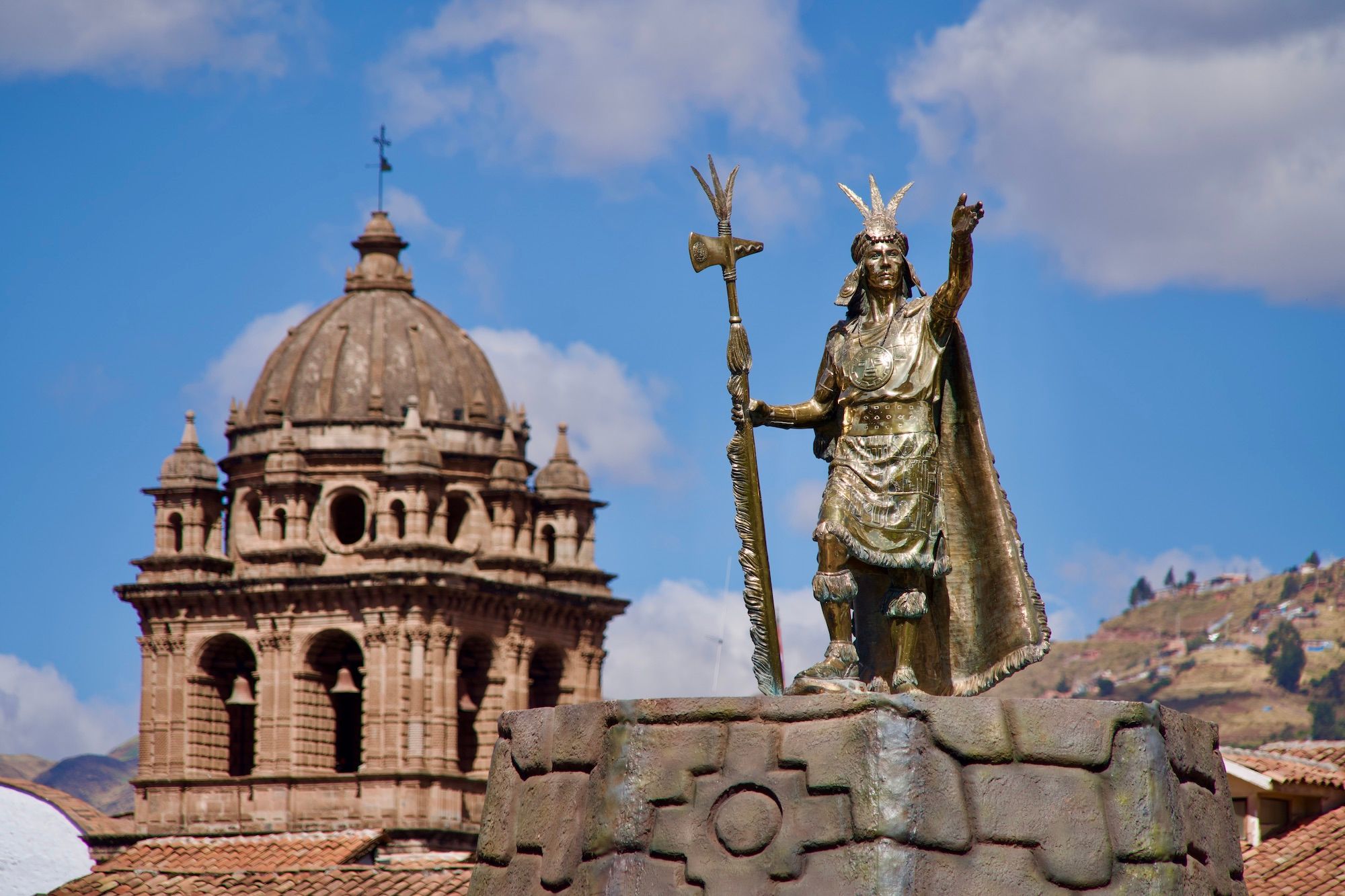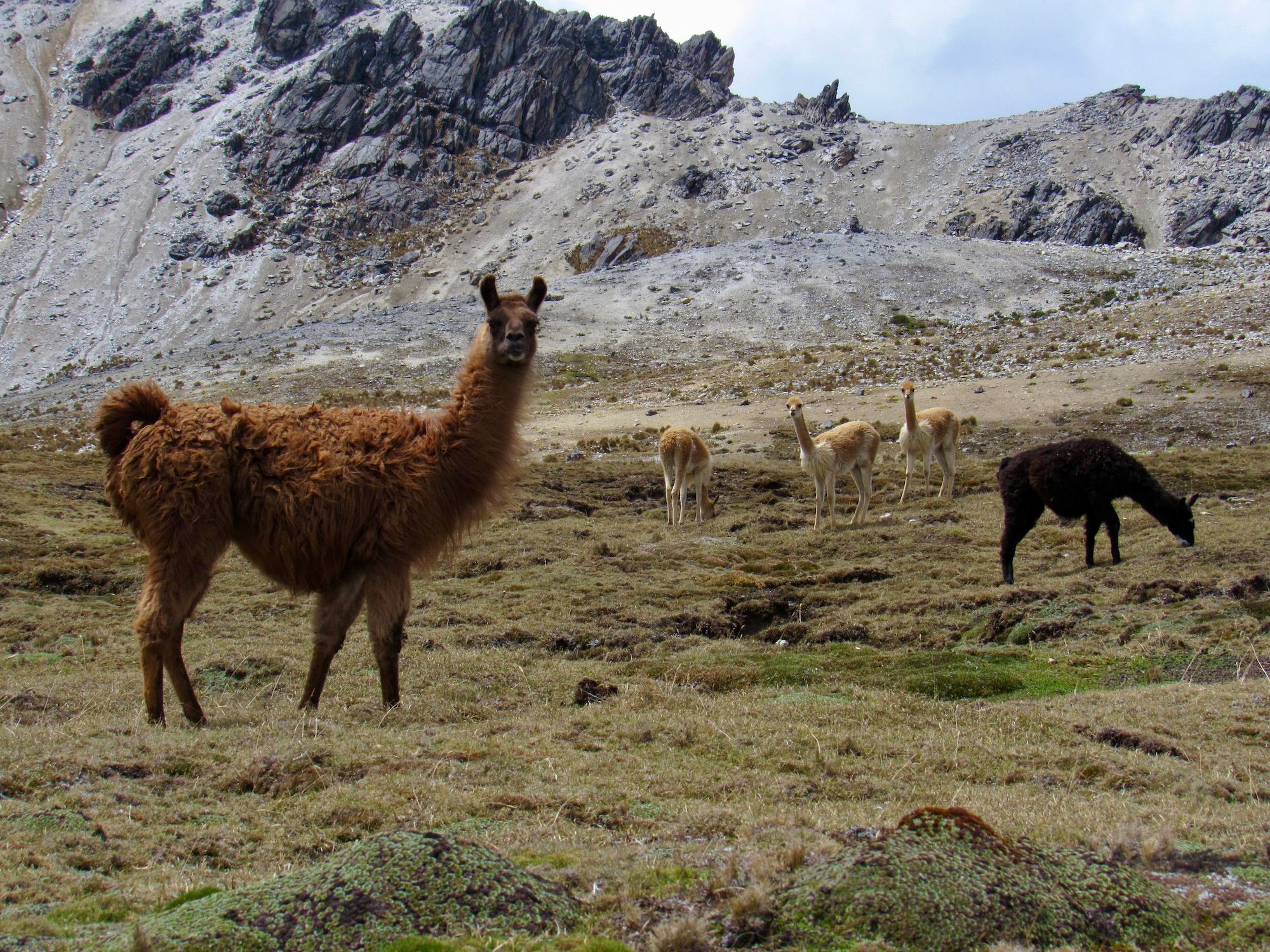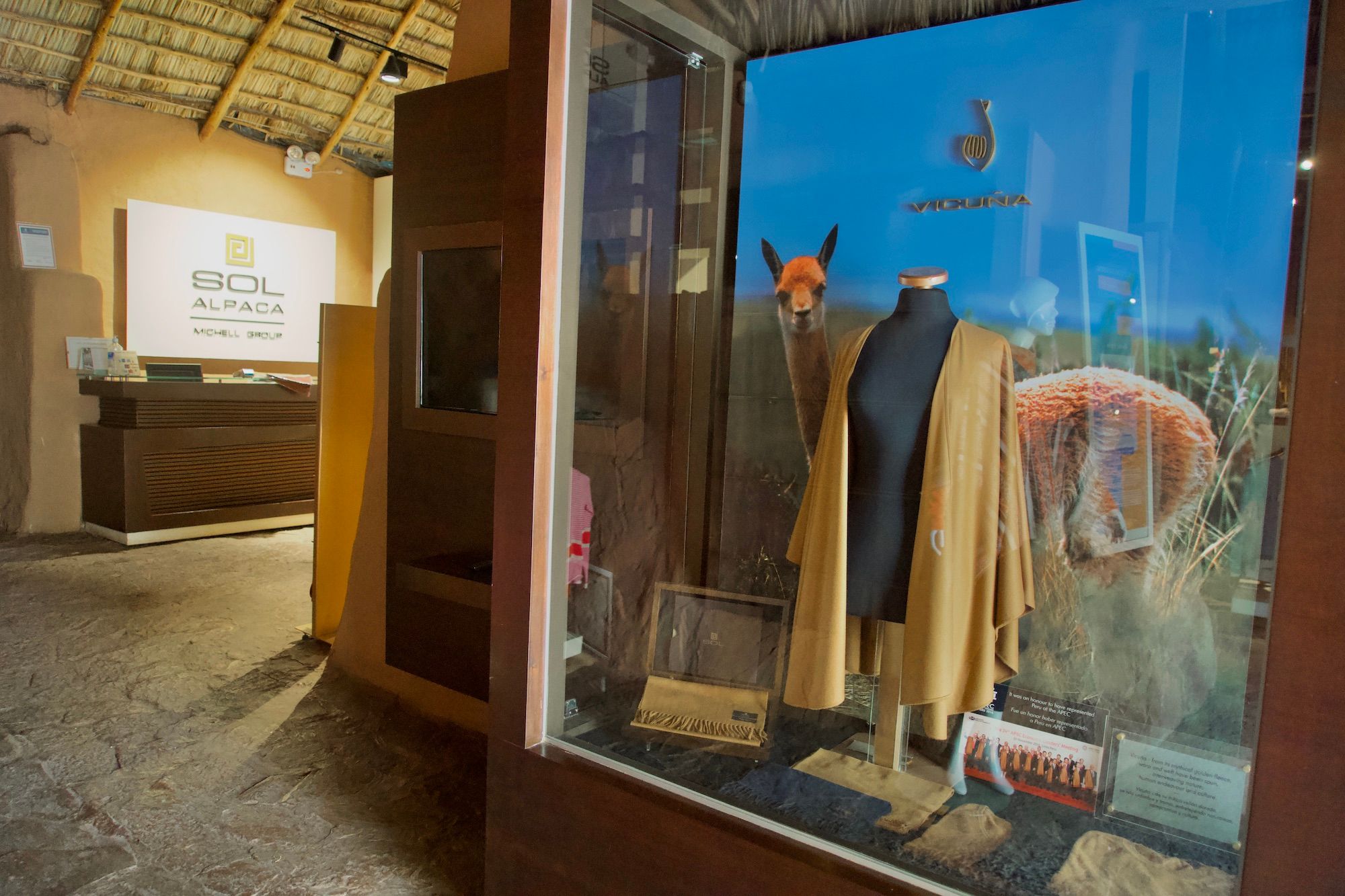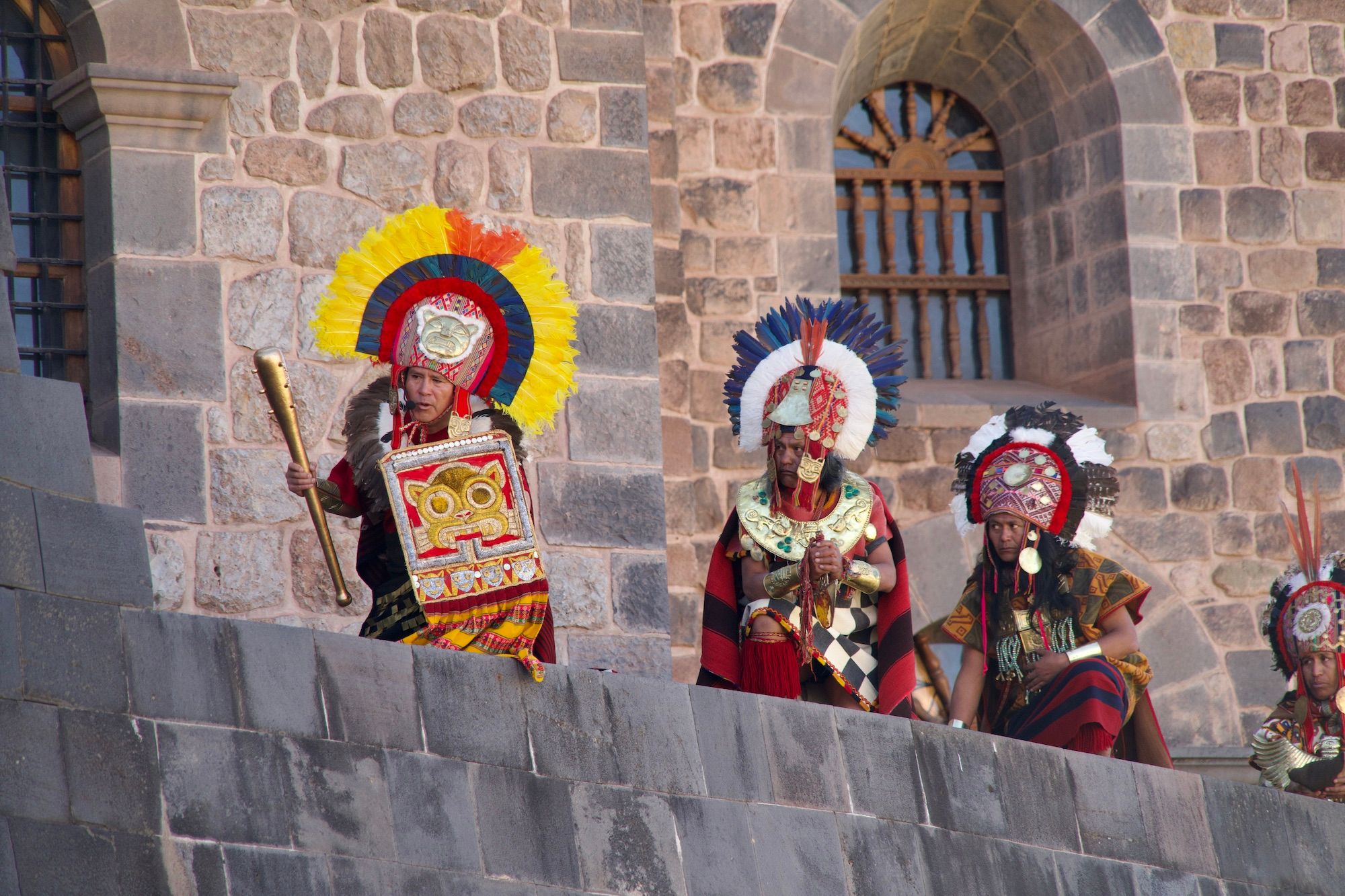Looking for vicuña is not for the faint of heart, or for those who suffer from car or altitude sickness. After two hours of bouncing along rough dirt roads in an all-wheel drive pickup, I finally spotted a vicuña drinking from a pond at about 17,000 feet above sea level. Then I saw another, and another. Once I knew how to look, the hillside was suddenly spotted with vicuña. Their pale cinnamon backs and white bellies blended in perfectly with the harsh rocky landscape.
The vicuña is the baby-faced, shy cousin of the llama. Their eyes are almost comically large in their delicate faces, with long eyelashes. They are famously shy and run like the wind from any perceived threat. They also have some of the softest fur in the world. That fur earned them a prominent place among the Inca’s pantheon of sacred animals. It’s also what also makes them so valuable today.



The finest natural fiber, vicuña fur is a mere nine to twelve microns in diameter. For comparison, cashmere ranges from fourteen to nineteen microns. Each delicate strand is hollow, making it incredibly lightweight and insulating.
Vicuña fur is also difficult to find. Very few companies make garments with vicuña, and they sell to a select few stores. Though the fur comes from Peru, most of what you’ll find in a shop is made in Italy. Only one brand, Kuna, sells products made in Peru. Regardless of where it’s made, a simple scarf costs $1,000 to $3,000 USD, and a full shawl can cost upwards of $10,000 USD. Each garment is sold with a certificate, showing that the fur was harvested ethically in government regulated shearings of wild vicuñas.
Vicuña fur was exceptionally valuable long before Italian manufacturing. The Inca, who ruled much of South America in the 01400s and 01500s, decreed that only the royal family could wear vicuña fur. Vicuñas were both sacred and protected: hunting one was punishable by death. Despite the Inca’s attachment to the vicuña, they were never domesticated. Thousands of years ago, humans domesticated llamas and alpacas, but the vicuña stayed wild.
During Incan times, the protection afforded the vicuña helped it thrive. When the Spanish arrived in South America, they estimated that about 2 million lived throughout the Andes. That is when the indiscriminate killing of vicuñas began, which decimated the population.

When the Inca lost control of South America, the vicuña lost its protection. In the late 01500s, hunting vicuña went from being a capital crime to being encouraged by the Spanish crown. Change started in 01777, when the Spanish Imperial Court decreed it was illegal to kill a vicuña. Simón Bolívar enacted a similar law in 01825. Neither effort had much effect, and poaching continued. In the 01960s, about 2,000 vicuña remained in Peru, and only 6,000 in all of South America.
In 01969, Peru and Bolivia signed an accord in La Paz that began a new era of protection for the vicuña. Chile and Ecuador joined soon after, followed by Argentina in 01971. After 01969, the population quickly began to recover. A census conducted by Peru’s Ministry of Agriculture in 02012 revealed over 200,000 vicuña in Peru. Convenio de la Vicuña found over 470,000 in all of South America in 02016.
Why were conservation efforts in the 01970s successful when similar laws had failed for the previous 200 years? One likely explanation is who controlled the lands where the vicuña live. Land grants from the Spanish crown to colonizers in the 01600s took control of the lands away from Indigenous Andeans. Even after independence, Peru’s rural areas suffered under a feudal system where Indigenous peoples worked as unpaid serfs, in conditions akin to modern slavery. It wasn’t until the Agrarian Reform in 01969 that Indigenous communities started to regain control of their lands. Ownership of large tracts of land passed from the descendants of Spanish colonizers to the Indigenous communities who live on them.

Today, most land in Peru’s puna, the high altitude plateau that covers much of southern Peru, is communally owned by rural Indigenous communities, though some is privately owned. According to Santiago Paredes, director of Pampas Galeras National Reserve, regardless of who owns the land, all vicuña must be protected. Any community, person or company that owns vicuña habitat must register a management plan with SERFOR, Peru’s National Forest and Wildlife Service. The plans include specific ways that vicuña will be protected from poaching, as well as how their habitat will be conserved and, if possible, improved.
Even with the population rebounding, vicuñas are still at risk. The biggest threats to their survival are loss of habitat due to climate change, competition for grazing with domestic animals, diseases like mange, and poaching.
Climate models predict decreasing rainfall in the central and southern mountain ranges in Peru, which is precisely where vicuñas live. According to USAID’s Climate Risk Profile for Peru, “temperature increases are forcing lower-elevation ecosystems to move higher, encroaching upon endemic species and ecosystems and increasing risk of extinction of high-mountain species.” As climate change pushes vicuña higher up the peaks, their habitat shrinks and fragments.

It is legal to graze livestock on vicuña habitat, which decreases their food supply. Contact with domesticated animals and rising temperatures may be causing the increasing mange outbreak among vicuña. While more research is needed, a 02021 study in Peru found that 6.1% of vicuña surveyed were infected. The parasite not only saps the animal’s energy, it destroys their fur, which makes them vulnerable to the extreme cold of the Andes. Mange is now the leading cause of death in vicuñas.
Some of these threats are easier to manage than others. In 02022, Peru’s National Agrarian Health Service (SENASA) began treating vicuña for mange in eleven regions. Enforcement of anti-poaching laws is improving. The nebulous threat of climate change is much harder to combat. Communities now focus on protecting the vicuña’s habitat, hoping that their efforts to improve the vicuña’s food and water supply will compensate for the damages of climate change.
The most important aspects of vicuña habitat are a constant source of water, native grasses for grazing, and an absence of human development. Unlike most camelids, vicuña must drink water every day. They are territorial animals and live in small herds with one alpha male and up to ten females with their offspring. During the day, they spread out in grassy meadows to graze. At night, they climb up rocky hillsides to sleep on bare slopes where predators, such as puma, don’t have enough cover to get close.

All of this makes harvesting their fur quite complicated. Centuries ago, Andean civilizations developed the chaccu, a ritual gathering of vicuña herds to shear the fur before releasing the animals to the wild. In the 01990s, the population had grown enough to bring back the ancient tradition.
During a chaccu, people spread out in a loose circle up to a mile from a vicuña herd. They close in slowly, clapping their hands and making noise to concentrate the vicuñas in the center of the circle. Small chaccus may capture a dozen animals in one day, while larger ones can capture hundreds over a few days.
Today, chaccu isn’t exactly the same as it was five hundred years ago. An Incan ruler no longer presides over the ceremony. Communities now have trucks to drive out into the puna to get close to vicuña herds, trips that would previously have taken days or even weeks on foot. Shearing is now done quickly, with electric shears. Also, the fur is no longer kept for the royal family. It’s sold to international companies, many of which export it to Italy.
Chaccu organizers register the date and location with their local government. Three government officials plus a veterinarian oversee each event and ensure that all vicuña protection protocols are followed correctly. SENASA’s plan to treat vicuña for mange relies on chaccu.
Veterinarian Óscar Áragon has worked with vicuña for years and comes from a family that has raised alpaca for at least six generations. He has a master’s degree in South American camelids from the National Altiplano University in Puno, Peru.
“There are three steps to a modern chaccu,” Áragon explains. “When a vicuña is caught, the veterinarian first checks it for disease and draws blood samples. If it is sick, it’s treated. If not, it’s sent to the second stage, where somebody checks the length of the fur. It must be at least seven centimeters long so they can shear off five centimeters. It takes two or three years for their fur to grow that long. If the fur is long enough, then the animal is taken to the shearing station.”

In the early 02000s, a kilo of uncleaned vicuña fur could sell for as much as $600 USD. According to biologist Felix de la Cruz Huamani, the price has been dropping steadily since, which could pose a threat to this ancestral practice. A large chaccu takes hundreds of people several days’ of work to carry out. Most communities hold chaccu as a cultural tradition and use the money they earn from selling the fur to subsidize the event.
As the price of vicuña fur plummets, some communities have started to appeal to the Peruvian government for help, asking for funding to continue holding chaccus. Ongoing political chaos in Peru has hampered efforts to get needed support from the government. If the government won’t help, the second line of defense is tourism.
In 02022, two communities in the north of the Ayacucho region, Ocros and Santa Cruz de Hospicio, invited tourists to participate in chaccu. Armando Pariona Antonio grew up in Ayacucho and has worked with vicuña for over fifteen years. He created the company Vicunga Travel, named for the scientific name of the vicuña, to bring tourists to communities in Ayacucho. There are a lot of challenges, he says, to making chaccu a tourist activity.
“They hold chaccus wherever the vicuña are, and that’s always a remote place at high altitude. Also, communities need a lot of training on how to work with tourists.” Despite the challenges, Pariona Antonio is determined to help communities continue the tradition.

Felix de la Cruz Huamani believes we can look at the challenge of protecting the vicuña from a different angle.
“Landowners who have a land management plan for vicuña are required to protect and improve the ecosystem as part of their commitment to protect the vicuña,” explained de la Cruz Huamani. “We know that the vicuña’s habitat is rich in water. If we focus on the benefits of the ecosystem, we see that cities in Peru all depend on the water that comes from the vicuña’s habitat.” As the climate changes and water becomes more scarce, focusing national attention on the conservation of the vicuña’s habitat as a water source may have a bigger impact on protecting the vicuña than tourism or selling fur.
Peru’s environmental goals for 02030 include strategies for improving species conservation and reducing ecosystem damage. However, political instability is a significant challenge in meeting these targets. The Ministry of Environment, which is responsible for the 02030 goals, had four different ministers in 02022.


In the end, what is most likely to save the vicuña from all the threats it faces is its strong cultural bond with Indigenous Andeans. Now that they have reestablished the tradition of chaccu, communities that coexist with wild vicuña are determined to not lose the practice again.
“Nowhere else in the world do people have this kind of interaction with wild animals,” Pariona Antonio said. “It is a unique practice that comes to us from our Wari ancestors, the civilization that was in Ayacucho before the Inca conquered them.”
Peru’s Indigenous Andeans who honor their ancestral traditions may be the vicuña’s best bet for survival.